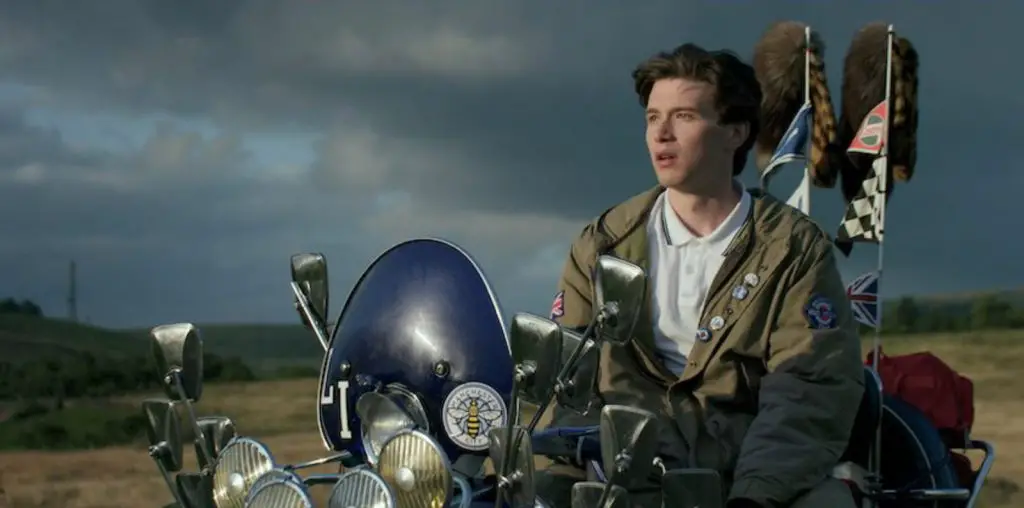
Carradine reflects on such challenges not with frustration, but with a deep respect for the moviemaking auteur behind classics Reservoir Dogs and Pulp Fiction. Part of this appreciation springs from gratitude: Tarantino put the actor’s career on the “in demand” track with Kill Bill, much as he raised the value of Pam Grier’s stock from depths of obscurity by casting her in 1997’s Jackie Brown. Like Grier, Carradine’s status as a genre icon – not only as martial arts wanderer Caine in the long-running seventies T.V. series “Kung Fu,” but also as a hero of pulpy B-movie classics like 1975’s “Death Race 2000”- put him on Tarantino’s radar early on.
“Quentin had read my autobiography, had seen my movies, and was a ‘Kung Fu’ fan,” Carradine informs with a grin, revealing perfect teeth. “In fact, he collects 16mm prints of the series, and ‘Shane’ (1966), too. And he could actually recite ‘Americana’ (1981), a picture I directed. I guess in that respect, I had a lot of influence on Bill’s character.
“With Bill, however, Quentin got me out of what I’ve done my whole career, which is to construct a character. Like, ‘Oh, I’m a folk singer,’ or, ‘I’m the guy who started the Civil War.’ But Quentin kept opening me up to just be there. It was not a constructed performance.”
Kill Bill presented the veteran onscreen s**t-kicker with another challenge, as well. Following Miramax’s decision to slice the film into two halves and release each as a separate entity (Kill Bill Vol. 1 surfaced in October, 2003), Bill would ultimately appear only as a malevolent voice in the first installment. Nonetheless, his title character looms large and casts a commanding shadow.
“It was originally conceived as one movie,” he explains of the two-film extravaganza. “Quentin was gonna keep Bill out of it for awhile and build up this idea of him as an incredibly powerful, cruel, monstrous guy. Then, you meet him and he’s likeable and charming. There was one point, where there was a close-up of me at the end of the first movie. Then, (Tarantino) took that back out and thought, ‘I’m gonna keep this a complete mystery (until the second film)’.”
In Kill Bill Vol. 2, Carradine’s main man becomes flesh to eventually dominate the story. Bill is revealed as a storyteller, spinning yarns in front of a firepit, behind a wet bar, and on the front porch of a Texas chapel. While the character is proficient with hands, feet, and weaponry, Carradine is seldom seen exercising such fighting skills. His strength comes from the script’s tasty wordplay, instead. Whether offering a fellow assassin advice on how to survive martial arts training with an unforgiving teacher (“Do what he says, or he’ll snap your neck and back like twigs), or reflecting on his own bloodstained past (“Some things can never be undone”), Carradine’s villain is a memorable, magnetic force.
“It’s hard to talk about the process,” he comments of Bill’s transition from unseen foe to prominent presence. “Putting it into two movies totally changed the concept. The result is that you have two very different movies. The first movie is pure action, but the second moves a lot faster, actually. The cutting is choppier – more Tarantino-styled and ‘get it on!’- but the content is rambling all over the place. That’s more of what we’re used to with Tarantino.”
Asked which of the two “Kill Bill” films is his personal favorite, Carradine flashes his impressive, smiling choppers and exhales another cloud of cigarette smoke. “I actually like the second movie better,” he laughs. “But, of course, I’m in it.”
